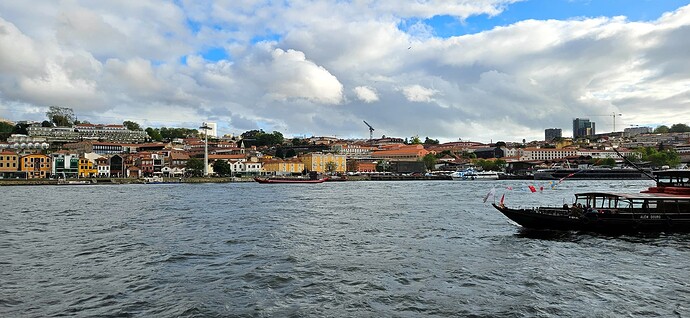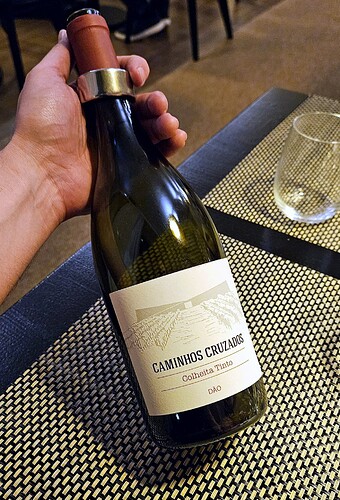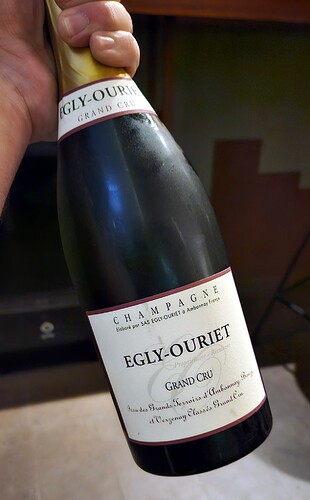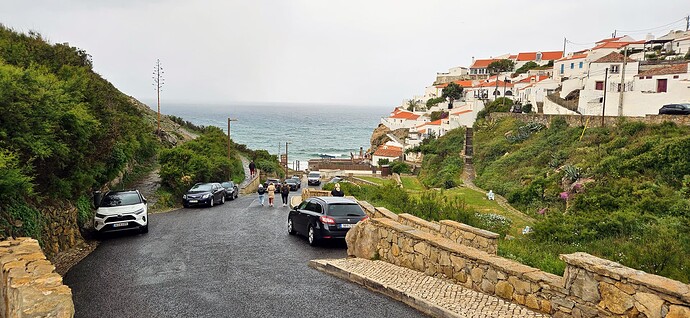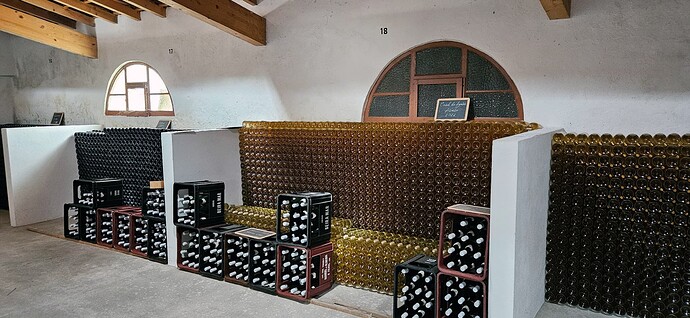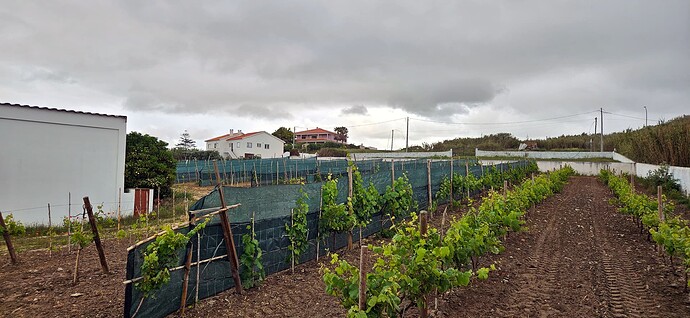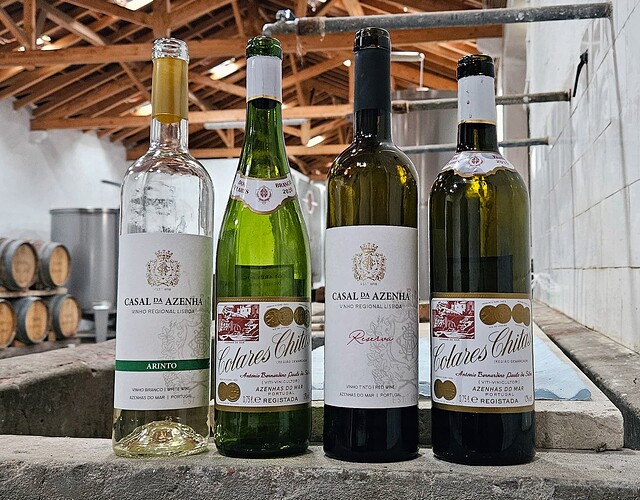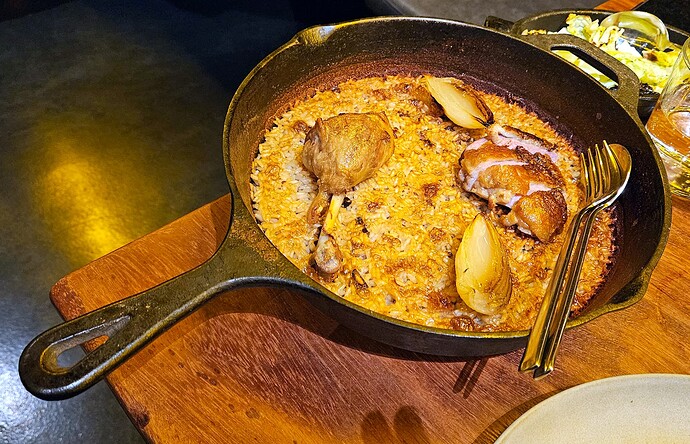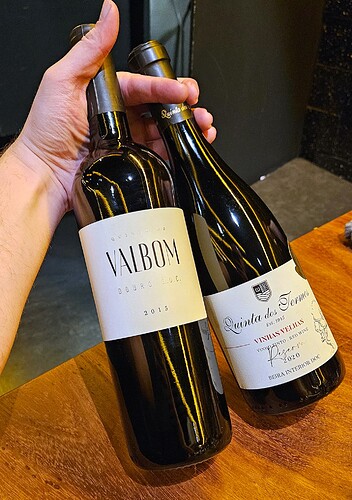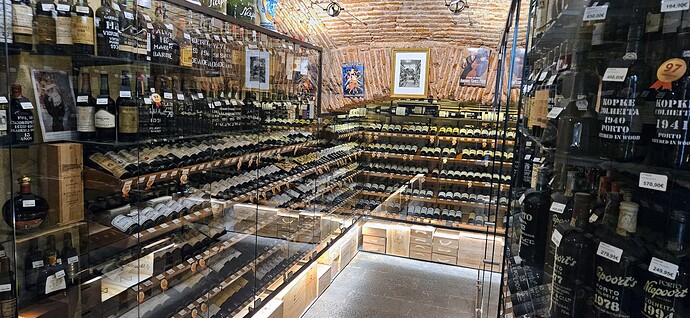After our visit to Taylor’s our group split in two for a moment: two of our group wanted to go back to our hotel, whereas Driver and I were thinking of going to a wine bar instead. Since the winemaker at Textura Wines had recommended the wine bar Prova on the Porto side, that was where we decided to head!
Instead of taking a cheap Bolt ride, we wanted to see the city (well, cities), so we walked to the wine bar instead.
Us approaching the Luís I bridge.
Here we are underneath the Luís I bridge; you can see Ponti Infante Dom Henrique further up the river.
Vila Nova de Gaia as seen from the Porto side. Here you can see lots of Port lodges at just one glimpse: Taylor’s, Fonseca, Ramos Pinto, Kopke, Barros, Cockburn’s, Ferreira…
At the wine bar we went for a bottle of white Colares. After all, splitting a half-liter bottle after two visits to Port lodges was probably more reasonable than going for a standard 0,75-liter one!
- 2021 Viuva José Gomes da Silva & Filhos Colares Genuino Branco - Portugal, Lisboa, Colares (25.4.2024)
100% Malvasia de Colares from ungrafted vineyards in the sandy soils of Colares. 12,5% alcohol. Total production 1100 half-liter bottles.
Quite intense and rather deep yellow-green color. The nose feels rich, ripe and somewhat tropical with aromas of sweet Golden Delicious apple, some nectarine tones, a little bit of honeydew melon, light floral nuances, a hint of cooked cream and a touch of vanilla. The wine feels broad, ripe and even slightly viscous yet relatively weightless on the palate with a quite full body and ripe yet a bit understated flavors of white peach, some saline mineral tones and notes of umami, a little bit of stony minerality, light tropical fruit notes, a hint of chalky bitterness and a touch of creamy character. The moderately high acidity lends good sense of balance to the wine, but it still lacking a bit in freshness. The finish feels ripe yet not sweet-toned but more savory with a rather long and slightly viscous aftertaste of white peach, some creamy tones, a little bit of saline minerality, light marine notes of crushed oyster shells, a sweetish hint of ripe greengage and a touch of savory umami.
This was an odd bird. I was expecting a white Colares to be a brisk, mineral and acid-driven white, but this turned out to be surprisingly broad, ripe and oily effort. Not really a crowdpleaser, though - just something very different from my previous experiences with white Colares. An interesting effort for sure, but not my favorite - the ripeness and breadth made the wine feel a bit tiring after a while. Priced somewhat according to its quality at 46€ for a half-liter bottle in a restaurant. (88 points)
Once we had polished about half of the Colares bottle, the other half of our group contacted us and informed that they were now ready and going to join us soon at the wine bar. After they arrived, we ordered a bottle of fizz.
- 2016 Quinta do Rol Grande Reserva Blanc des Blancs - Portugal, Lisboa, Vinho Regional Lisboa (25.4.2024)
100% Chardonnay. After the fermentation the wine is bottled with liqueur de tirage, then bottle-fermented and aged sur lattes for over 7 years. 12% alcohol, non-dosé.
Medium-deep lemon-yellow color. The nose feels nuanced and quite attractive with aromas of leesy creaminess, some honey-oats bar tones, a little bit of almond flour, light crunchy notes of star fruit, a hint of fermenting peach, sweeter touch of greengage and a whiff of apple jam. The wine feels crisp, fresh and quite characterful on the palate with a medium body and layered flavors of nutty almond character, some ripe Golden Delicious apple tones, a little bit of steely minerality, light tropical fruit flavors of fresh pineapple and ripe greengage, a leesy hint of creaminess and a savory touch of umami. Bright, high acidity and ample, voluminous and silky mousse. The finish is long, dry and savory with a medium-long aftertaste of saline minerality, some incisive steely tones, a little bit of fresh peach, light nutty notes of almond, a hint of ripe apricot and a touch of leesy creaminess.
A nice, fresh and harmonious Portuguese bubbly. I was surprised how little autolytic character the wine showed after 7 years of aging on the lees, but I guess a tiny bit of dosage and some additional bottle aging might've helped with that. However, the wine showed good sense of balance, freshness and structure. Nothing too thrilling, but nothing to complain either. A tasty appetizer, if anything. Priced according to its quality at 36€ in a wine bar and great value at 19,90€ from the winery. (90 points)
After the bubbly it was time for us to transport ourselves at our restaurant, which was a place called Patio 44.
Gnocchis e cogumelos with a healthy addition of cheese.
Bochecha with mashed potatoes.
The food was pretty much delicious all the way through, but the restaurant’s wine list was a bit short with not a single recognizable name to us. As we were going to have all kinds of different dishes, we thought a lighter, brighter red would be a good allrounder and asked the waiter for a recommendation. He recommended one Dão red, which made sense to us, so we went with that. Well, the wine was pretty ok, but no big hoorays.
- 2018 Caminhos Cruzados Dão Colheita Tinto - Portugal, Beiras, Dão (25.4.2024)
A blend of Touriga Nacional, Alfrocheiro, Tinta Roriz and Jaen. Fermented in French oak barrels. Touriga Nacional and Alfrocheiro aged in oak barrels, Tinta Roriz and Jaen in stainless steel. 13,5% alcohol.
Luminous, translucent cherry-red color. The nose feels sweetly-fruited and youthful with quite primary aromas of sweet and soft dark berries, some fresh bilberries, a little bit of ripe cherry, light floral notes of violets and a hint of savory spice. The wine feels quite ripe, soft and round on the palate with a medium-to-moderately full body and somewhat sweet-toned flavors of ripe black cherries, some blueberry tones, a little bit of strawberry, light primary notes of candied dark berries and a brambly hint of raspberry. Quite modest acidity and very ripe, mellow and gentle tannins. The finish is ripe, moderately long and barely at all grippy with a soft aftertaste of ripe black raspberries, some black cherries, light strawberry tones, a little bit of bilberries, a hint of stony minerality and a touch of savory spice.
A very youthful and quite pleasant little red that feels a bit too ripe, soft and primary for my palate. Although the fruit department feels quite nice here, it is still way too young, despite the wine being almost 6 years old. Furthermore, the overall feel is a bit too solar with the very ripe and sweet-toned overall character, pretty modest acidity and super gentle tannins. The wine went nicely with food, but this was a wine I'm not going to return to. Priced according to its quality at 19€ in a restaurant (and 10,90€ at the winery).
(83 points)
After the dinner we returned to Prova for one more bottle - the only non-Portuguese wine on our trip!
- NV Egly-Ouriet Champagne Grand Cru Extra Brut - France, Champagne, Champagne Grand Cru (25.4.2024)
An assemblage based on the 2018 vintage with reserve wines from 2017 (40%) and 2016 (40%). Pinot Noir (70%) and Chardonnay (30%) from Montagne de Reims. Fermented spontaneously in oak. Aged in oak barrels until the summer following the harvest, bottled, aged sur lattes for four years. Disgorged in July 2023. 12,5% alcohol, dosage 1 g/l.
Quite pale greenish-yellow color. The nose feels ripe yet vaguely green-toned with aromas of yellow fruits, some fresh Granny Smith apple, light leesy tones, a little bit of green almond, a hint of zesty citrus fruit, a touch of sauvage funk and a whiff of sweet Golden Delicious apple. The wine feels dry, crisp and nuanced on the palate with a medium body and brisk flavors of steely minerality and tangy salinity, some ripe Granny Smith apple tones, a little bit of citrus fruit, light leesy tones, a hint of fresh greengage and a touch of cidery funk. The rather high acidity lends good sense of intensity to the flavors and the mousse feels modest yet firm and persistent. The finish is long, brisk and refreshing with a slightly wild aftertaste of saline minerality, some sharp Granny Smith apple tones, a little bit of leesy character, light zesty citrus fruit notes, a hint of slightly cidery funk and a red-toned touch of raspberry fruit.
A tasty and attractive Champagne, but ultimately lacking the thrill I've seen in many other Egly-Ouriet wines. This was just, well, good. Very dry due to the modest dosage, yet not too austere, thanks to the high yet not racy acidity. The balance is there and there is even a tiny bit of sauvage funk and a suggestion of wild cidery character to add some depth. However, there's nothing that would make me feel like this wine really is something special. Maybe with a bit more age the wine will develop some oxidative, nutty complexity and other, more interesting aspects? I sure do hope so. At the moment the wine is maybe a bit too pricey for its quality at 155€ in a wine bar.
(90 points)


